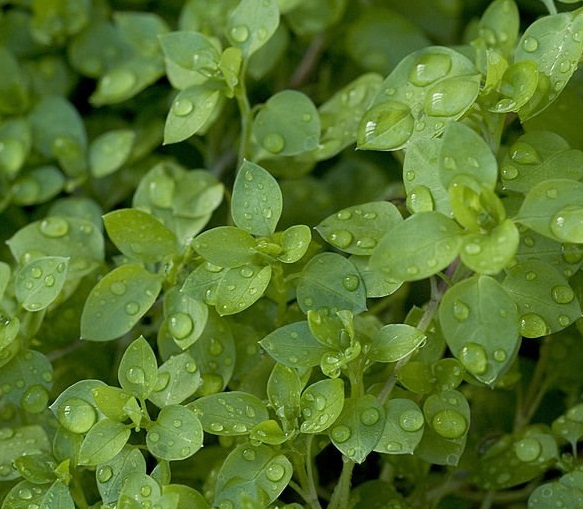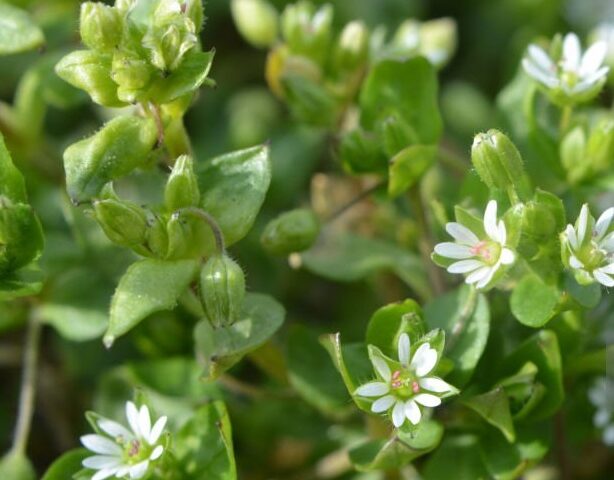As the cool weather arrives, one of the easiest and most rewarding wild edibles to forage is chickweed (Stellaria media), making it a perfect plant to seek out during fall foraging. This nutritious plant is often overlooked but offers much for foragers, from salads to cooked dishes. Found across much of the U.S., chickweed is accessible to foragers of all levels, and November is an excellent time to harvest it. In this post, I’ll cover where to find chickweed, how to identify its edible parts, and some delicious ways to use it.
What is Chickweed?

Chickweed is a low-growing plant with small, white, star-shaped flowers. It thrives in cool, moist environments, often found in gardens, fields, and disturbed areas like trails or construction sites. Its leaves are small and oval, and a single line of tiny hairs runs along one side of the stem, which helps identify it. Chickweed has been used traditionally to soothe skin irritations and improve digestion, and it’s packed with vitamins and minerals, making it more than just a tasty wild green.
Where to Find Chickweed
If you’re new to foraging, chickweed is a great plant to start with because it’s abundant and easy to identify. You can find it in gardens, fields, forest edges, and other places with damp soil and partial shade. While chickweed can grow year-round in mild climates, it’s especially vibrant in cool months like November. I often find it in shaded areas where the soil stays moist, and once you locate one patch, you’ll likely find more nearby. Chickweed spreads quickly and forms dense mats, making it easy to harvest.
Edible Parts of Chickweed
Almost the entire plant is edible, which makes it a versatile wild green. The leaves, stems, and flowers are all good to eat, either raw or cooked. The leaves have a mild, spinach-like flavor, while the stems are slightly crisp. The flowers, though small, add a subtle sweetness to dishes. I find chickweed’s tender texture makes it perfect for raw salads, but it can also be cooked just like other greens.
How to Harvest Chickweed
Harvesting chickweed is simple and requires minimal tools. I usually pinch off the tender tops of the plant, leaving the lower parts and roots in the ground so they can regrow. After gathering, I rinse the plant thoroughly to remove dirt and any insects. Chickweed grows close to the ground, so a good rinse is important. Once clean, it’s ready to be eaten or cooked.
Cooking with Chickweed
Chickweed’s mild flavor and tender texture make it a versatile ingredient. One of my favorite ways to use chickweed is in fresh salads. I combine it with other greens like arugula or spinach and toss in some lemon juice and olive oil for a simple, refreshing dish. Here’s an easy recipe I love:
Chickweed Salad Recipe:
- Gather a handful of fresh chickweed leaves, stems, and flowers.
- Combine with other salad greens.
- Add a handful of chopped nuts (optional) and crumbled feta cheese.
- Toss with olive oil, lemon juice, salt, and pepper.
For a cooked dish, I like to sauté chickweed with garlic and olive oil, much like I would with spinach. It also works well in soups, added just before serving to keep the greens tender and bright.
Nutritional Benefits
Foraging Chickweed may have health benefits as it is packed with vitamins A, C, and D, as well as calcium, iron, and magnesium. Eating chickweed regularly can support digestion and overall health. It’s a great wild edible to incorporate into your diet, not just for its flavor but for its nutritional benefits. Whether you’re foraging chickweed for its nutritional value or its versatility in the kitchen, it’s a fantastic plant to include in your meals.
Chickweed (Stellaria media) is truly a remarkable wild edible that offers both culinary versatility and nutritional benefits. As the cool weather of November sets in, it provides an excellent opportunity for foraging enthusiasts to explore their local gardens, fields, and disturbed areas in search of this vibrant green. Whether you choose to enjoy chickweed raw in salads or cooked in various dishes, its mild flavor and tender texture can elevate your meals while connecting you with nature.
Remember to always forage responsibly, ensuring you accurately identify chickweed and adhere to local guidelines. As you incorporate this delightful wild green into your cooking, you’ll not only enrich your diet but also deepen your appreciation for the natural world around you. Happy foraging!
Caution:
Foraging for wild edibles like chickweed (Stellaria media) can be a rewarding and enjoyable experience, but it is essential to approach it with caution. Always positively identify any plant before consuming it, as some plants can be toxic or harmful. Consult reliable field guides or experts in wild foraging if you’re uncertain about a plant’s identity. Additionally, be mindful of your local environment and foraging regulations. Only harvest plants from areas that are free from pesticides or pollutants, and be respectful of nature by not overharvesting. If you have allergies or health concerns, please consult a healthcare professional before trying new wild edibles. Enjoy your foraging adventures responsibly!
